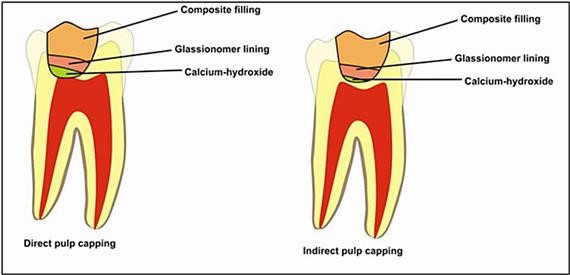
Pulp capping attempts to maintain tooth health by treating and sealing the dental pulp. The success of this process depends critically on the selection of pulp-capping materials. It is critical for Phoenix dentists and patients to stay current on the latest developments in pulp-capping materials. This article highlights recent industrial developments and provides a thorough overview of the various materials used in pulp capping by a family dentist in North Central Phoenix.
Materials for Pulp Capping
Making the right choice for pulp-capping material is essential to ensure that the process works. Various materials are available, each with special qualities and indications. Here is a deeper look at a few materials that are frequently used for pulp capping.
- Calcium Hydroxide: This long-standing material is a staple in pulp-capping procedures. It has antimicrobial properties and promotes the formation of dentin to protect the dental pulp. However, it has some limitations, such as its relatively long setting time.
- Mineral Trioxide Aggregate (MTA): MTA is a new and highly biocompatible material that has gained popularity in recent years. It sets quickly, is highly effective, and is suitable for a wide range of pulp capping applications.
- Biodentine: Biodentine is an innovative material that combines the benefits of calcium hydroxide and MTA. It has a short setting time, is biocompatible, and promotes dentin formation. Dentists at Phoenix often prefer Biodentine because of its ease of use and reliability.
- Resin-based Materials: Some pulp-capping materials are resin-based, which allows for better adhesion and sealing of the tooth. They are often used for direct pulp capping and offer improved aesthetics.
Recent Advancements in Pulp Capping Materials
Innovations in dental research and technology have resulted in the creation of better and more recent pulp-capping materials. Notable developments in this area include the application of “smart” materials—materials that react to changes in the environment of the mouth cavity — which are being investigated by researchers. When necessary, these materials can release certain chemicals or drugs to aid in pulp healing.
More potent antimicrobial and antibacterial pulp-capping materials are being developed to better fight inflammation and infection. Materials that encourage tooth pulp regeneration are being developed by researchers, which may reduce the need for more intrusive procedures. Progress in material composition simplifies the handling and application of pulp capping materials for dentists, shortens process times, and enhances patient results.
Speak with a licensed dentist who is conversant with the most recent developments in dentistry and who can suggest the best material for your particular requirements if you are experiencing dental problems that might necessitate pulp capping. These developments guarantee that Phoenix patients receive the greatest care and long-term maintenance of dental health.




